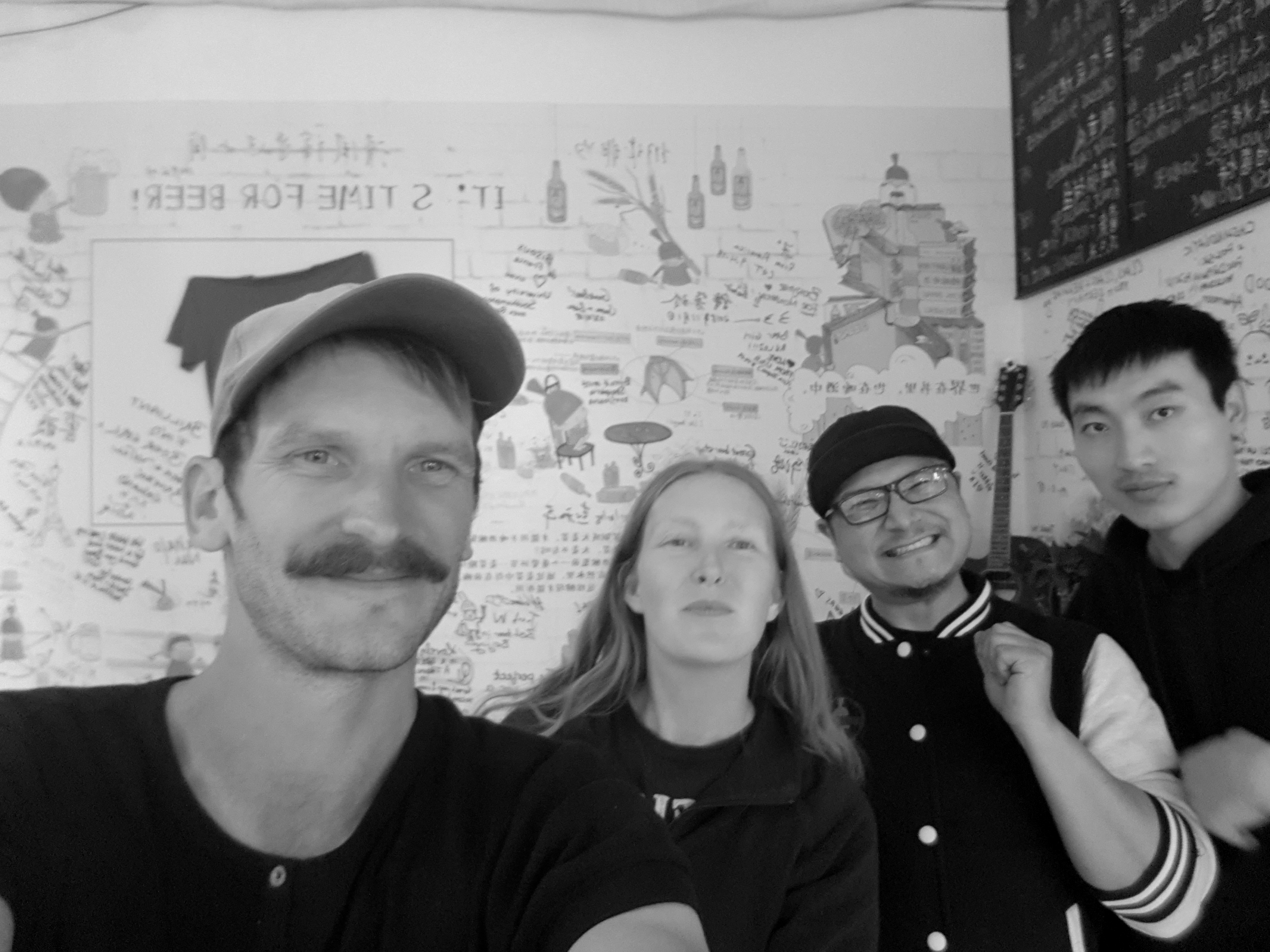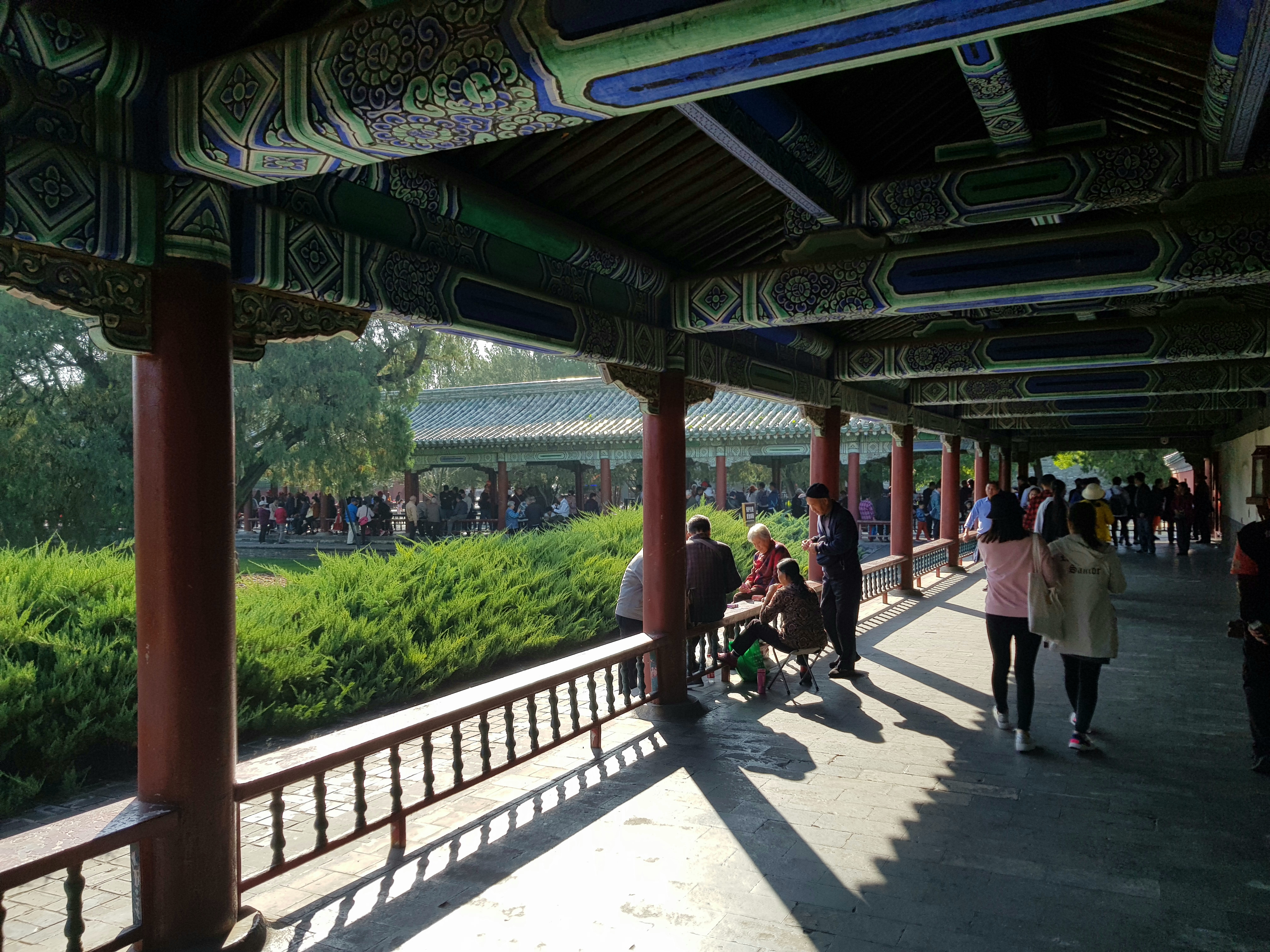Beijing, 5-8 October
After visiting the Great Wall we continue to explore the lives and times of China’s emperors in the capital city. Located in the northeast of China, Beijing is the third most populated city in the world and one of the world’s leading centres for culture, politics, business and technology, but also one of the oldest cities in the world, with a rich history dating back three millennia. Welcome to Beijing, where the old meets with the new!

The first walled city in Beijing was called Jicheng, built in 1045 BC. After the First Emperor unified China, Jicheng became a prefectural capital for the region, but it wasn’t until much later that Jicheng (Beijing) would become the powerhouse it is today.
In 1213 the city was besieged by Genghis Khan and razed to the ground, to be rebuilt two generations later by Kublai Khan. Centered on the Drum Tower, the city now became more important than ever before.

Finally on 28 October 1420, Beijing was officially designated the primary capital of the Ming Dynasty after completion of the new imperial residence, the Forbidden City. By the end of the 15th century Beijing had taken it’s current shape. Once the Qing Dynasty had taken over in the 17th century only slight modifications to the city were made, and to the northwest of the city the Summer Palaces were established.
On the 1st October 1949, Mao Zedong announced the creation of the People’s Republic of China from atop Tian’anmen, where in 1976 the cultural revolution was brought to an end. Today Beijing is a thriving metropolis we’re excited to get to know a little over the next few days.

Day 1: Joining the Party
Retracing our steps back from the Great Wall to the city we meet an American guy on the subway who happens to work near our AirBnB and delivers us right to the door, where we’re greeted by the owner, a very sweet lady and her amicable brown poodle Cookie. Things are running smoothly so we have ample time to go out and explore a bit on our first day.
We’re hoping to dive right in and sample Beijing’s street food scene, but are faced with our first reality check. Recent urbanization has brought about the loss of historic neighbourhoods and Wanfujing Snack Street is sadly shut down, to be re-developed into a shopping mall.. After settling for fast food then, we set out to find a bar in one of the famous hutongs, narrow alleyways in the cities traditional housing style, only to be foiled again: the bar is permanently shut down. Not the best. It’s beginning to get dark too so we need a new plan. We sit down by the side of the road when a big crowd of people with national flags painted on their faces and holding red banners pass us by and we decide to go with the flow and find out what’s happening. Before we know it we’re in the middle of a queue steadily pushing for Tian’anmen Square.

Four days ago on the first of October China celebrated its 70 year anniversary of the People’s Republic, and because this week is a national holiday, folks are out in numbers to visit the birthplace of the Republic.

We see the Working People’s Cultural Palace and Altar of Earth & Harvests beautifully lit up in the midst of an excited crowd, before making our way back to Tian’anmen Square, where we realize an entire metro line is shut down for tonight’s occasion. A few hours later and with sore feet we arrive at a German bar for a much needed pint before heading back to the apartment.
Day 2: Lama Temple & craft beers
In the morning we visit the Yonghe Temple, or Lama Temple, a temple and monastery of Tibetan Buddhism converted from a Ming residence for court eunuchs in 1722 during the Qing dynasty by the Yongzhen Emperor, who’s body was buried in the temple following his death. His successor gave the temple imperial status by replacing its turquoise tiles with yellow tiles, which were reserved for the emperor. The monastery became the national centre of Lama administration and residence for Tibetan Buddhist monks, which it still is today.


After the temple we go in search of a tea shop which presents us with another new reality. Beijing’s authentic tea shops are more and more becoming a thing of the past. In its place, craft beer is getting very popular however. Sure it’s only twelve but when a cafe appears out of nowhere we seize the opportunity. (When in Beijing and all..)
Given the time of day it’s no surprise we are the only customers when we walk into Beer Girl 77. It’s very much a hipster place and serves loads of different craft ales, lagers, stouts and ciders from their own micro brewery. The bar staff lets us taste a few and we end up staying for most of the afternoon. Between the beers, a translation app, their growing confidence speaking English and our trying but failing to learn Mandarin, plus some good will, we manage to connect on many levels with these nice guys and have a great time!

Day 3: Shopping & Temple of Heaven
Today I find a few of my preconceptions about China do not quite hold up. First of all, once again today it’s a beautiful, sunny, smog free day in Beijing while we’re headed out to do some shopping, and the roads are quiet. We’re looking for a French supermarket in another hutong, but can’t seem to find it. When we ask an older lady sitting on a plastic chair in front of her house for directions, within minutes no less than ten people are banded around us, all trying their best to help us out. Who ever said the Chinese are standoffish?
Yesterday we were told that a few years back a lot of businesses were moved from the city centre to the outer rings to create more breathing space for everyone. I suppose this explains why we haven’t been able to find certain shops and bars, and why there’s no real overcrowding and subsequent bad pollution, which may in turn shed some light on the fact that Beijingers are not exactly short, quite a few of them are taller than I am! That’s my prejudices out the window, consider me schooled.
After shopping for souvenirs, we find a shop that sells baguettes, and actual Gouda cheese and sliced ham! We have been fantasizing about this for a few weeks now, it’s the little things right? We relax for a bit by a lake in the city’s biggest green space, Chaoyang Park, where you can ride a giant rubber duck.

With a few more hours of daylight left in the day we decide to visit the Temple of Heaven, a Taoist temple complex which was constructed around the same time as the Forbidden City, between 1406 and 1420.
First built by the Yongle emperor, the complex was extended and renamed Temple of Heaven in the 16th century, and renovated in the 18th century. With the downfall of Qing, the temple was left in disrepair, but since 1918 has been open to the public. It’s symbolic layout and design have had a big influence on architecture and planning in the Far East over many centuries.

In ancient China, the emperor was regarded as the Son of Heaven. To be seen to be showing respect to the source of his authority, in the form of sacrifices to heaven, was extremely important. The Temple of Heaven was built for these ceremonies, mostly comprising prayers for good harvests.




Twice a year the Emperor and all his retinue would move from the Forbidden City to stay in the temple complex and perform a procession and ceremonies no ordinary Chinese was allowed to witness.

At the end of a successful day we feast on noodles and dumplings at a proper family-run hole-in-the-wall type restaurant where our translation app once again proves its worth.
Day 4: Ending Beijing in style
We wake up to big plans for our final day in Beijing, as we still have the Forbidden City and Summer Palace to visit. The area we stay in is quite lively with a few convenience stores as well as a few nice bakeries by the metro station. The portuguese style egg custard pastries are delicious and make for a good breakfast today. Afterwards we start off with exploring the coveted Forbidden City.

The Forbidden City is the former Chinese imperial palace from the Ming dynasty to the end of the Qing dynasty (1420-1912). It served as the home of emperors and their households and was the political center of Chinese government for almost 500 years. The emperors clearly liked their real estate as the complex consists of a whopping 980 buildings spread out over 72 hectares of ground, and today most of it is sprawling with tourists.




We spend our afternoon on the Summer Palace, a short journey out of town to the so-called Fragrant Hills. Between this and the Forbidden City we’re transitioning from Ming to Qing and from extremely busy to pleasantly quiet. Much like the emperor himself back in the day we escape the hustle and bustle of town and find a place to relax.

Having said that, I’m pretty sure we’re being shadowed by guys wearing earpieces throughout the afternoon.. I guess by the end of it they realized we’re really not that interesting. Much unlike the Summer Palace, where you could spend an entire day from start to finish and still not see it all!

The Palace was built around 1749 by the Qianlong Emperor to celebrate his mother’s 60th birthday (nope, it’s definitely not the thought that counts), and is centered around the Great Temple of Gratitude and Longevity (I’m sure she lived long to express her son a lot of gratitude). Best to let the pictures speak for itself here.






So we’ve stood on the emperor’s wall, we’ve trudged through his home, explored his most sacred temple and chilled out at his summer palace, what better way to end our Beijing trip than by eating the emperor’s own food: Peking Duck! We find this succulent Chinese meal at Li Qun Restaurant, a favourite among famous Chinese actors!

Beijing was a great experience and hopefully a sign of good things to come for the rest of our journey through China. Next we’re travelling to the Ancient City of Pingyao!
That was a really interesting read. A bit of history and culture. Loved reading it – felt like I was there (well almost).
Photos again superb.
Xxx
LikeLike
Nice to read.I was there in May 2019.
LikeLike
Thank you! We were lucky to get there just after the big celebration on the 1st October, apparently it was a bit of a mess for tourists arriving on the 1st, but I loved Beijing, great city!
LikeLike
😄👍
LikeLike